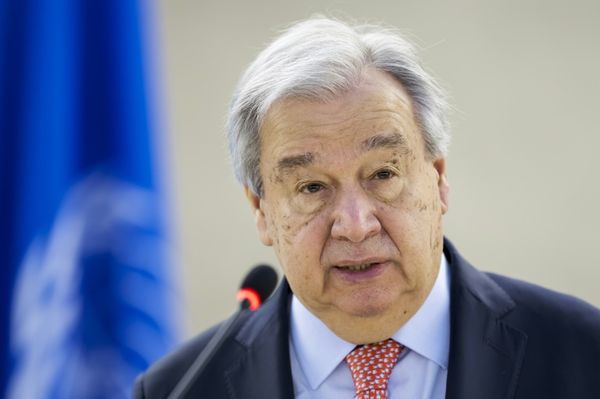It wasn't long ago that forecasters were confidently predicting three Federal Reserve interest rate cuts this year, starting in June, along with an economy gliding in for the softest of landings. Things don't look quite so simple as April gets underway.
Why it matters: A combination of robust data on growth and some hawkish sounds from top Fed officials has led to markets repricing those odds in recent days, shifting the likelihood toward those rate cuts being both shallower and further away.
Driving the news: In a speech Wednesday, chair Jerome Powell said that Fed policymakers "do not expect that it will be appropriate to lower our policy rate until we have greater confidence that inflation is moving sustainably down toward 2 percent.
- "Given the strength of the economy and progress on inflation so far, we have time to let the incoming data guide our decisions on policy," he said at the Stanford Graduate School of Business. "We are making decisions meeting by meeting."
- Powell's comments are in line with earlier signals that the central bank is in wait-and-see mode and not pre-committing to rate cuts on any particular timeline.
By the numbers: A month ago, the CME Fedwatch tool — based on futures prices — put 74% odds on at least one rate cut by June. As of Wednesday morning, that looked more like a coin flip, at 58% odds.
- There has been a selloff in longer-term bonds in the first three trading sessions of Q2, pushing the 10-year Treasury note yield to 4.41% Wednesday morning, from 4.21% at the end of last week.
- The angst was triggered in part by a strong read on manufacturing activity Monday from the Institute for Supply Management.
- Economic data out Wednesday morning was more mixed, with a soft report on service sector activity from the ISM paired with stronger-than-expected private-sector job creation reported by payroll processor ADP.
State of play: It has come amid hawkish rumblings from other Fed officials, several of whom have indicated they see continued robust growth as a reason to forestall rate cuts.
- Atlanta Fed president Raphael Bostic, for example, said Wednesday morning on CNBC he now envisions only one rate cut this year, taking place in Q4.
- "At this point, I think the bigger risk would be to begin reducing the funds rate too early," Cleveland Fed president Loretta Mester said Tuesday. "And with labor markets and economic growth both being very solid, we do not need to take that risk."
- Fed governor Christopher Waller, in a speech last week, said he's skeptical that a surge in productivity is creating lasting potential for the economy to grow at above-trend rates without causing inflation.
The bottom line: Powell isn't throwing in with the more hawkish views from his fellow policymakers, but rather is keeping options open — for now. But it adds up to more uncertainty over when relief from higher rates may arrive.







